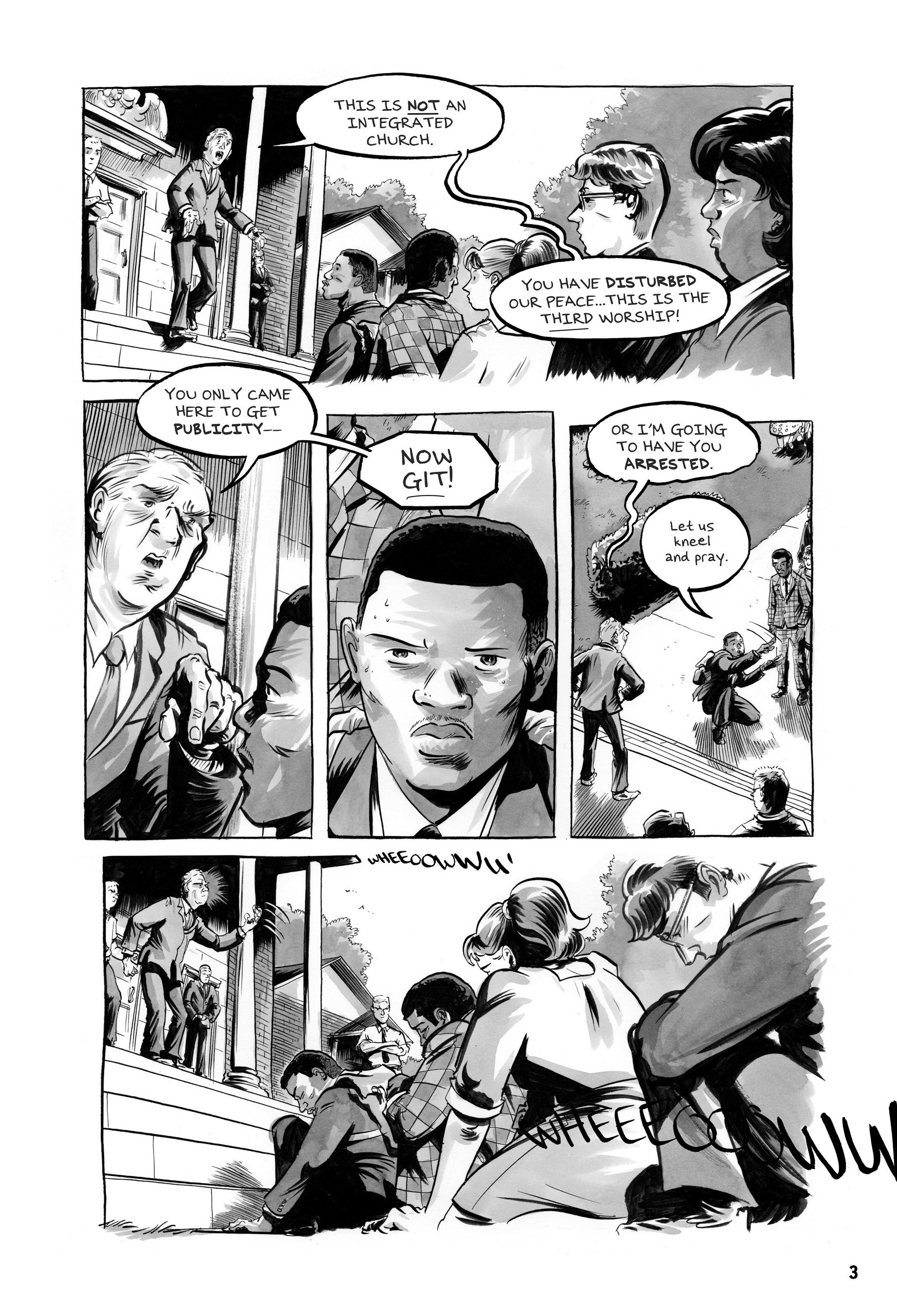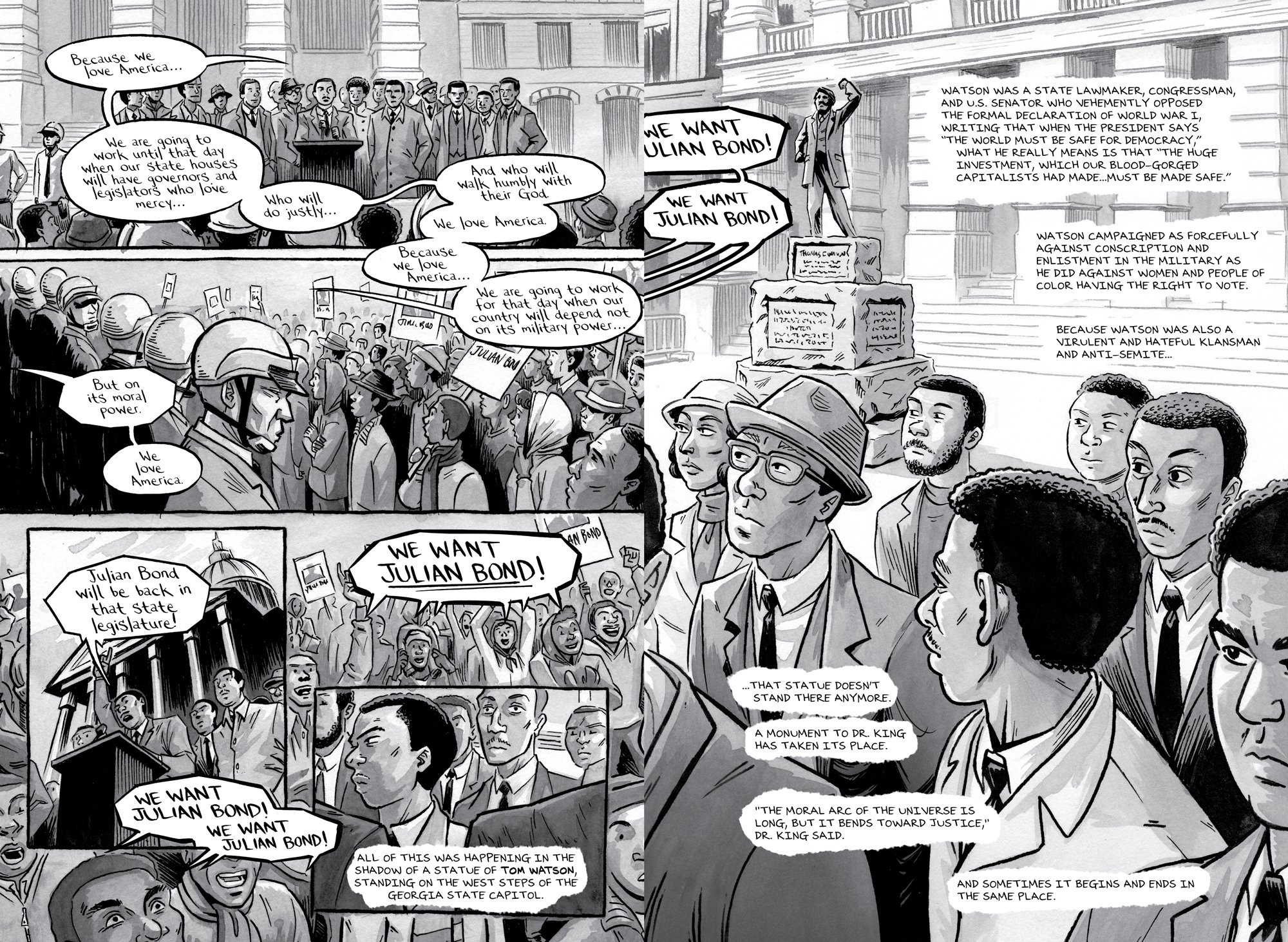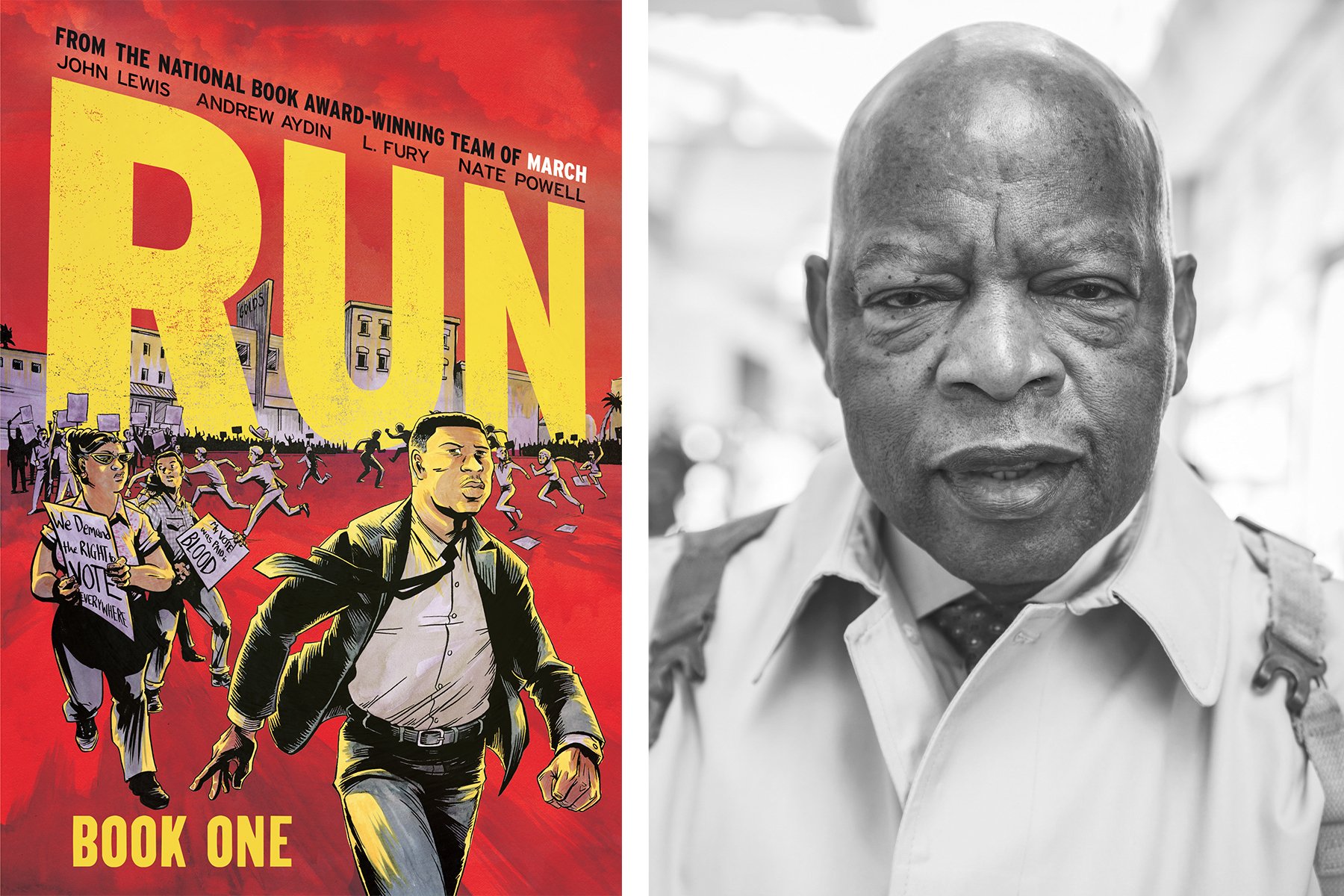The Civil Right Movement and the Struggle of Nonviolence: A review of RUN
The Voting Rights Act of 1965 was passed on August 6, 1965. On August 8, 1965 John Lewis led a protest against the segregation of the First Baptist Church of Americus, Georgia. All the demonstrators were arrested. On August 11, 1965 in Los Angeles, California, Marquette Frye, a Black man, was pulled over for drunken driving. As police officers attempted to arrest Frye, a physical altercation broke out between the police officers, Frye, Frye’s mother, and several bystanders. This altercation led to the event known as the “Watt riots” — five days of civil unrest in the Watts neighborhood of Los Angeles where 34 Black people died, and 3,952 Black people were arrested.
These three events spanning five days and the entire country of the U.S. in August 1965 make up the introductory scene for RUN: Book One by John Lewis, Andrew Aydin, L. Fury, and Nate Powell. RUN, the sequel to Lewis’s critically acclaimed, award winning graphic novel trilogy MARCH, chronicles Lewis’s continued struggle in the fight for civil rights in the 1960s from the passing of the Voting Rights Act of 1965 to the moment Stokely Carmichael (now Kwame Ture) used Black Power as a rallying cry in Greenwood, Mississippi on June 16, 1966.
RUN shows the central conflicts for civil rights leaders and activists being both ideological and internal — the decision to continue to commit to non-violence or move to a form of protest that included self-defense — and political and external — how to raise voter turnout in the midst of rampant voter suppression and threat of violence against Black voters. In the midst of these conflicts the book does not let the reader forget the men and women putting their lives on the line, ready to sacrifice everything for racial equality and Black empowerment in the United States; because in doing so, they were constantly under the threat of racial and political violence.
The book gives readers a glimpse into the debates within the Student Nonviolent Coordinating Committee (SNCC), of which Lewis was the president at the time, on unified messaging against the draft for the Vietnam War, the election of Julian Bond, and the decision to move on from Dr. Martin Luther King’s nonviolent rhetoric. The book ends with being ousted from his position as president of SNCC for his continued and unwavering commitment to Dr. King’s vision.
Like its predecessor, RUN is an excellent historical autobiographical graphic novel that gives readers a nuanced view of the complexities inside the activist movements of the civil rights era from the first hand account of Senator John Lewis. RUN would be an excellent addition to syllabi for a civil rights history course, or a course on political violence.




